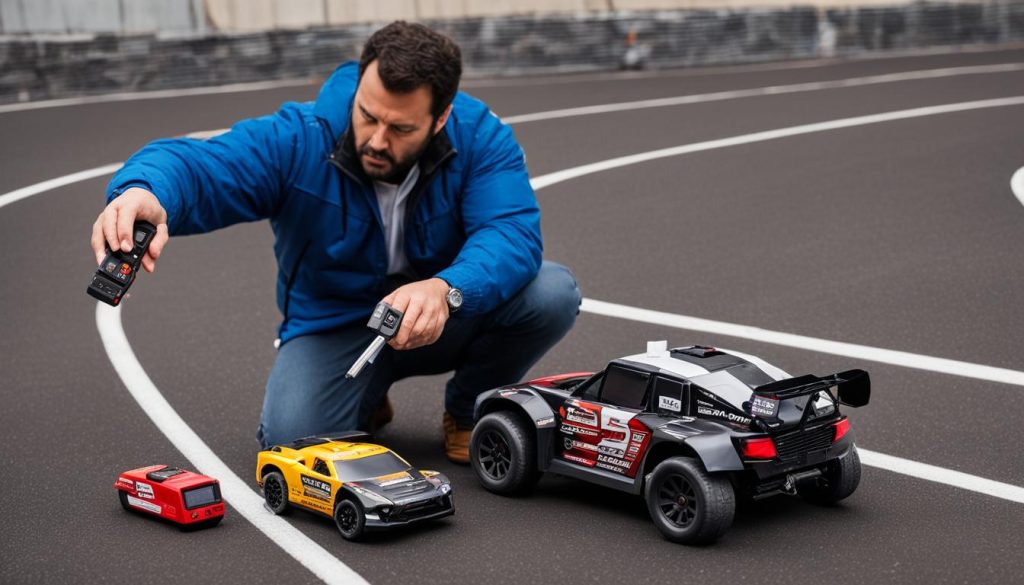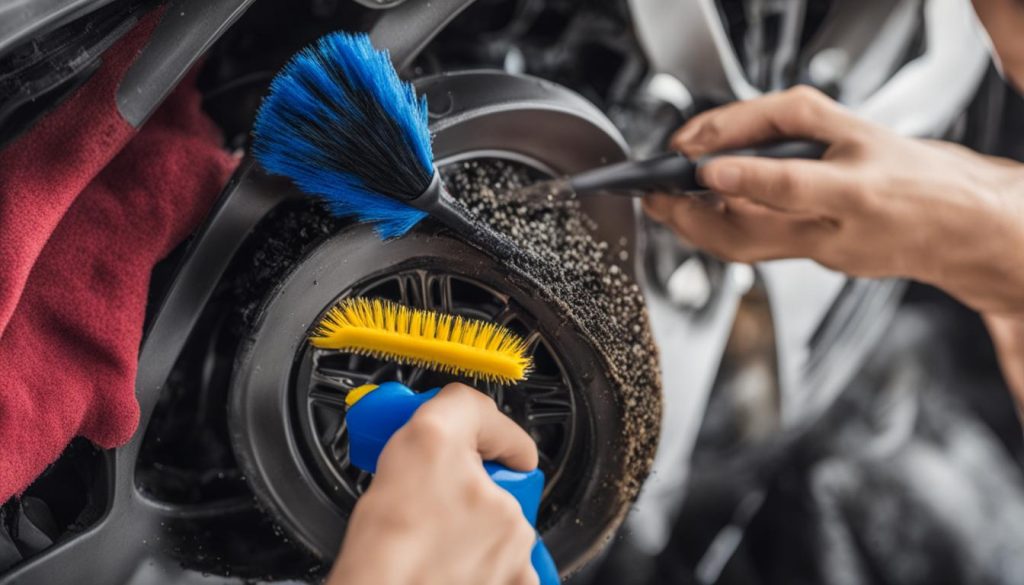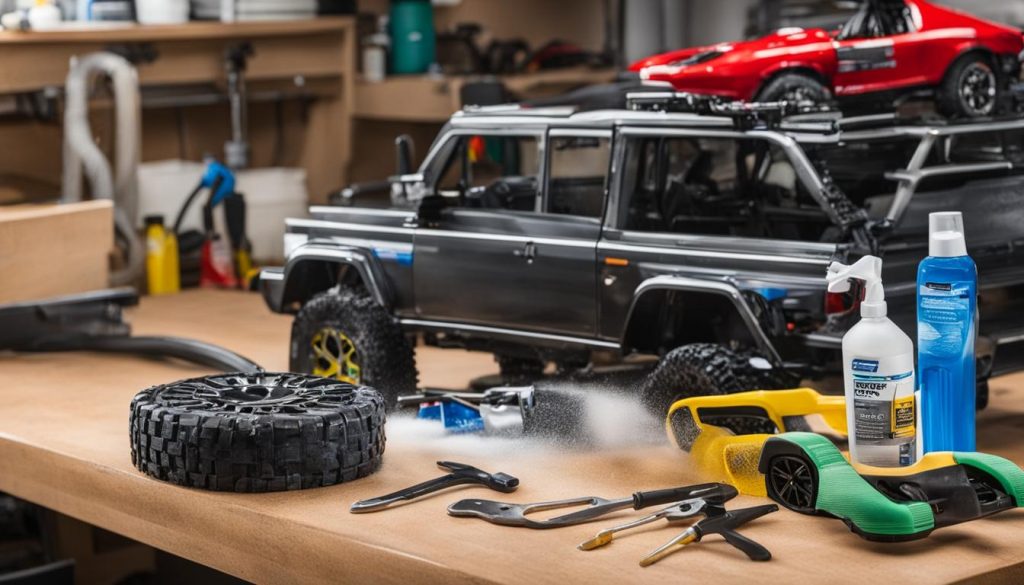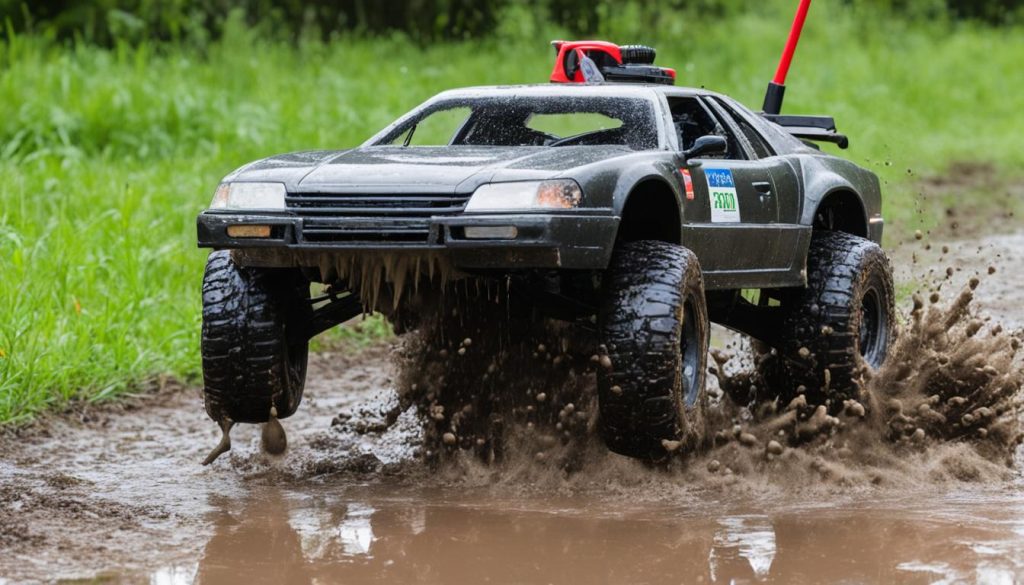Experiencing sudden stops with your RC car can be frustrating. There’s nothing more disappointing than being in the middle of an exciting race or enjoying a leisurely drive when your RC car suddenly comes to a halt. But fear not! In this article, we will delve into the common causes behind why your RC car randomly stops while driving and offer troubleshooting tips to help you get back in the action.
Whether you’re a seasoned RC car enthusiast or a beginner, understanding why your RC car stops without reason is essential. By following our troubleshooting guide, you can identify and resolve the underlying issues that may be causing these unexpected stops. We will cover various aspects, including the switches, batteries, fuel system, transmitter, wiring, servos, and gears, providing you with valuable insights and practical solutions.
So, if you’re tired of your RC car losing power suddenly or experiencing frustration when it stops while driving, keep reading. With our troubleshooting tips and techniques, you’ll be able to get your RC car back on track and enjoy uninterrupted fun-filled adventures.
Key Takeaways:
- Experiencing random stops with your RC car can be frustrating, but troubleshooting the issue can help you get back on track.
- Check the switches, batteries, fuel system, transmitter, wiring, servos, and gears for potential issues.
- Ensure that the switches are in the correct position and the batteries are installed correctly and in good condition.
- Inspect the fuel system if you have a nitro RC car and check for any kinks in the fuel line.
- Verify that you are using the correct transmitter and frequency settings, and check the condition of the transmitter antenna.
Common Switch Problems
One common issue that can cause an RC car to stop is a problem with the switches.
First, check if both the transmitter and the RC vehicle are turned on. Sometimes, the switches can be difficult to see, so use a flashlight if needed. If turning on the switch doesn’t work, make sure the switches are in the correct position. Additionally, check for any loose or damaged wires connected to the switches.
If you’re unsure how to check the switches in your RC car, refer to the owner’s manual or contact the manufacturer for guidance.
| Switch Problem | Possible Cause | Solution |
|---|---|---|
| Transmitter Switch Not Working | Defective switch | Replace the transmitter switch |
| RC Car On/Off Switch Not Working | Faulty switch or loose/damaged wires | Inspect and replace the switch if necessary, check and repair any loose or damaged wires |
| Switches in Incorrect Position | Accidentally switched off | Turn the switches to the correct position |
| Loose or Damaged Wires Connected to Switches | Wires disconnected or damaged | Check and securely connect or replace any loose or damaged wires |
Regularly checking the switches in your RC car can help prevent unexpected stops and ensure smooth operation.
Battery-Related Issues
Battery problems are often the culprit behind RC cars stopping unexpectedly. Ensuring that the batteries in both the RC car and the transmitter are properly installed is crucial to avoiding this issue.
If you are experiencing random stops, follow these steps to troubleshoot and fix potential battery-related problems:
1. Checking Battery Installation
Ensure that the batteries are correctly inserted in their respective slots in both the RC car and the transmitter. Make sure they are facing the correct direction and are fully seated. Incorrect battery installation can lead to intermittent power loss, causing the RC car to stop abruptly.
2. Replacing Old or Low-Quality Batteries
If your RC car has been using the same batteries for a while, it may be time to replace them. Old or low-quality batteries can result in insufficient power delivery, causing the RC car to lose power and stop unexpectedly. Invest in high-quality RC car batteries for optimal performance and longer run times.
3. Addressing Missing Batteries
Double-check that all battery slots are filled in both the RC car and the transmitter. Missing batteries or incorrectly installed batteries can lead to power interruptions, causing the RC car to stop suddenly. Ensure all battery compartments are properly secured and never leave any slots empty.
4. Dealing with Battery Corrosion
Battery corrosion can impede the flow of electricity and cause performance issues in RC cars. Clean the battery contacts with a cotton swab and a mild solution of vinegar or lemon juice to remove any corrosion buildup. Be gentle while cleaning to avoid damaging the battery contacts. Regularly inspect the battery compartment for signs of corrosion and address them promptly.
| Problem | Cause | Solution |
|---|---|---|
| RC car stops unexpectedly | Incorrect battery installation | Double-check battery placement and orientation |
| Old or low-quality batteries | Replace with fresh, high-quality batteries | |
| Missing batteries | Ensure all battery slots are filled and secured | |
| Battery corrosion | Clean battery contacts with vinegar or lemon juice |
By addressing battery-related issues, you can minimize the chances of your RC car randomly stopping. Regularly inspect and maintain the batteries to ensure consistent and reliable power delivery, allowing you to fully enjoy the excitement of RC car driving.
Fuel System Check (Nitro RC Cars)
If you own a nitro RC car, the fuel system plays a crucial role in its performance. To troubleshoot any issues that may be causing your RC car to stop unexpectedly, it’s essential to conduct a thorough fuel system check. By examining the fuel tank, fuel lines, and overall fuel system, you can identify and address any potential problems.
Fuel Tank Inspection
Start by inspecting the fuel tank itself. Ensure that it has an adequate supply of fuel and that the fuel is fresh. A low or empty fuel tank can cause your RC car to stop abruptly. If needed, refill the fuel tank with high-quality nitro RC car fuel. It’s also important to check for any damage or leaks in the fuel tank. A damaged fuel tank can lead to fuel leaks, resulting in an inconsistent fuel supply to the engine.
Fuel Line Check
Next, examine the fuel lines for any kinks or blockages that could impede the fuel flow. A fuel line kink or obstruction can disrupt the fuel delivery to the engine, causing your RC car to stall or stop. Carefully inspect the fuel lines from the fuel tank to the engine, ensuring they are free from any bends, twists, or other obstructions. If you notice a kink or blockage, gently straighten the line or remove the obstruction to restore proper fuel flow.
Complete Fuel System Check
If a visual inspection of the fuel tank and fuel lines doesn’t reveal the cause of the problem, it’s recommended to perform a comprehensive fuel system check. This involves examining the various components of the fuel system, including the fuel filter, fuel pump, carburetor, and pressure lines. Inspect these components for any signs of damage, clogs, or malfunctions. If necessary, clean or replace these parts to ensure optimal fuel delivery to the engine.
Regular maintenance and a thorough fuel system check can help keep your nitro RC car running smoothly and prevent unexpected stops. By paying attention to the fuel tank, fuel lines, and overall fuel system, you can address any issues promptly and enjoy uninterrupted RC car racing.
Transmitter and Frequency Issues
When it comes to RC cars, the transmitter and frequency settings play a crucial role in ensuring proper functionality. Using the correct transmitter and matching frequencies are essential for a smooth driving experience. Let’s explore some key factors to consider when dealing with transmitter and frequency issues.
Verify the Correct Transmitter
First and foremost, make sure you are using the appropriate transmitter for your RC car model. Each RC car requires a specific transmitter that is compatible with its unique system. Using the wrong transmitter can lead to communication errors and unexpected stops.
Match the Frequencies
Next, pay attention to the frequencies of both the transmitter and the RC car. Look for frequency labels on both devices and ensure they match. When the frequencies align, the transmitter and RC car can establish a strong and reliable connection, allowing for precise control and uninterrupted performance.
Check the Transmitter Antenna
The condition of the transmitter antenna is also important. Ensure that it is fully extended and undamaged. A damaged or shortened antenna can weaken the transmission signal and result in poor range or intermittent stops. Keeping the transmitter antenna in optimal condition is essential for maintaining a stable connection with your RC car.
Inspect the Receiver Antenna
In addition to the transmitter antenna, it is equally important to inspect the receiver antenna in your RC car. Make sure it is properly installed and not damaged. The receiver antenna receives signals from the transmitter and plays a critical role in relaying commands to the car’s internal components. Any damage or misalignment can lead to signal loss and unexpected stops.
By addressing these transmitter and frequency issues, you can ensure a reliable and uninterrupted driving experience with your RC car. Don’t overlook the importance of crystal matching, maintaining transmitter and receiver antennas, and using the correct equipment for optimal performance.
Wiring Problems
Loose or broken wires can cause various issues with your RC car. It’s important to check the wiring connections and address any problems to ensure optimal performance. Here are some common wiring problems and how to resolve them:
1. Motor Wires
If your RC car’s steering works but the car won’t move, there may be a loose wire from the motor. Check the connections between the motor and the rest of the circuit. Reattach any loose wires and ensure they are secure. If any wires are damaged or broken, you may need to replace them.
2. Steering Servo Wires
If your RC car doesn’t respond to steering commands, there may be a loose wire to the steering servo. Inspect the wiring connections between the steering servo and the receiver. Make sure all wires are properly connected and tighten any loose connections. Replace any damaged wires if necessary.
3. Battery Pack Wires
If your RC car doesn’t receive power at all, it may be due to a loose or disconnected wire from the battery pack or battery compartment. Check the wiring connections between the battery pack and the rest of the circuit. Reattach any loose wires and ensure they are securely connected. If any wires are damaged, replace them with new ones.
By addressing these wiring problems, you can ensure that your RC car functions properly and prevent any unexpected stops during your adventures. Regularly inspect the wiring connections to catch any issues early on and maintain the longevity of your RC car’s performance.

Servo Problems
Servo problems can be the cause of your RC car responding inconsistently to steering commands. If you notice that your RC car only responds to certain steering inputs but not others, it’s likely that the servos are experiencing issues.
To diagnose if the servos are the problem, start by unplugging them from the receiver and then plugging them into a working receiver with the same frequency. This will help determine if the issue lies with the servos or the receiver.
If your RC car still doesn’t respond correctly after testing the servos on a different receiver, it’s likely that the servos themselves are malfunctioning and may need to be repaired or replaced.
If you require further assistance with diagnosing and resolving servo problems, consider seeking help from a local hobby shop or RC car club. They have the expertise and knowledge to perform advanced testing and provide advice on repair or replacement options.
Common Servo Issues:
- Unresponsive servos
- Jerky or erratic movements
- Servo buzzing or humming sounds
- Loose or disconnected servo wires
- Overheating servos
It’s important to address servo problems promptly as they can compromise the performance and control of your RC car. Remember to regularly check and maintain your servos to ensure optimal operation.
Gear Issues
If you notice that your RC car is making a grinding noise or wobbling while in operation, it could be due to gear problems. To address this issue, follow these steps:
- Check the pinion gear: Ensure that the pinion gear, which is located on the motor shaft, is properly tightened and aligned with the spur gear. If the pinion gear is loose or misaligned, it can result in poor gear engagement and cause the grinding noise or wobbling effect.
- Inspect the spur gear: The spur gear, which is meshed with the pinion gear, should also be inspected for any signs of damage or misalignment. If the spur gear is worn out or out of alignment, it can affect the smooth operation of the RC car.
- Address a broken steering arm: If your RC car runs but wobbles, a broken steering arm could be the culprit. To fix this issue, you can replace the broken steering arm with a suitable replacement, such as a piece of stiff wire. Make sure the replacement is securely attached to maintain proper steering functionality.
Properly maintaining and aligning the gears in your RC car is essential for smooth operation and overall performance. By ensuring that the pinion gear is tightened and aligned with the spur gear, and addressing any broken steering arms, you can enjoy a more enjoyable and reliable RC car driving experience.
Battery and Transmitter Issues
Battery and transmitter issues can be among the culprits behind your RC car randomly stopping. It’s essential to address these problems to ensure uninterrupted and enjoyable driving experiences. Here are a few key things to check:
Battery Failure in RC Car
Start by examining the battery in your RC car. Make sure it is functioning properly, as a failing battery can cause the car to stop unexpectedly. Check if the battery connections are secure and not corroded. If the battery is old, consider replacing it with a fresh one to ensure optimal performance.
RC Car Transmitter Problems
Your RC car’s transmitter plays a crucial role in its operation. Check the transmitter battery to ensure it is not dead or low on power. A dead transmitter battery can cause signal issues and lead to the car stopping abruptly. Additionally, inspect the transmitter for any mechanical damage or bad wiring. Faulty wiring can disrupt the connection between the transmitter and the RC car, causing unpredictable behavior.
Troubleshooting Battery and Transmitter Issues
| Issue | Possible Solution |
|---|---|
| Battery in RC car not functioning properly | Replace the battery with a new one |
| Dead or low transmitter battery | Replace the transmitter battery |
| Mechanical damage or bad wiring in the transmitter | Repair or replace the transmitter |
By addressing these battery and transmitter issues, you can minimize the risk of your RC car randomly stopping and enjoy uninterrupted control over your vehicle.
Lack of Fuel (Nitro RC Cars)
For nitro RC cars, fuel is essential for proper functioning. Running out of fuel can cause your vehicle to stop abruptly, leaving you stranded and frustrated. It is important to regularly monitor the fuel level in your nitro RC car to avoid unexpected stops due to fuel depletion.
To ensure that your nitro RC car doesn’t run out of fuel, follow these steps:
- Check the fuel tank: Regularly inspect the fuel tank to ensure it has enough fuel. A visual examination should help you determine if the tank needs refilling.
- Verify fuel quality: In addition to checking the fuel level, confirm that the fuel is of good quality. Dirty or contaminated fuel can lead to engine issues and poor performance.
- Refill with fresh fuel: If the fuel tank is empty or running low, refill it with fresh fuel. Choose a high-quality nitro fuel that is suitable for your RC car’s engine, following the manufacturer’s recommendations.
- Perform regular fuel checks: Make it a habit to check the fuel level before each RC car session. This simple practice will help you avoid unexpected stops on the track and ensure a smoother driving experience.
By keeping a close eye on your nitro RC car’s fuel level and maintaining a supply of high-quality fuel, you can prevent fuel-related problems and enjoy uninterrupted performance during your RC car sessions.

| Common Fuel Problems | Possible Solutions |
|---|---|
| Fuel tank running empty | Regularly check the fuel level and refill as needed |
| Low-quality or contaminated fuel | Choose a reputable, high-quality nitro fuel for optimal performance |
| Failure to monitor fuel level | Perform regular fuel checks to prevent unexpected stops |
Regular Maintenance Importance
Regular maintenance of your RC car is crucial for preventing issues and ensuring optimal performance. By performing routine checks on the replaceable parts of your RC car, you can identify and address any potential faults before they lead to unexpected stops or more serious problems. This proactive approach to maintenance will not only enhance the longevity of your RC car but also maintain its performance at its best.
Performing Regular Checks
To prevent RC car issues, it is essential to conduct regular inspections of the key components. Here are the components that should be included in your maintenance checklist:
- Battery: Check the battery regularly to ensure it is properly charged and in good condition. Replace any damaged or worn-out batteries promptly.
- Motor: Inspect the motor for any signs of wear or damage, such as overheating or unusual noises. Cleaning the motor regularly can also help maintain its performance.
- Servo: Check the servos to ensure they are functioning properly and responding accurately to commands. Lubricate the servo gears as needed to keep them running smoothly.
- ESC (Electronic Speed Controller): Inspect the ESC for any loose connections or damage. Clean the ESC with compressed air to remove any dirt or debris that may affect its performance.
- Remote System: Test the remote system to ensure it is transmitting signals correctly. Replace the batteries in the transmitter regularly to prevent signal loss.
By establishing a regular maintenance routine and addressing any potential issues promptly, you can prevent unexpected stops and maintain the overall performance of your RC car.
Proactive Prevention for Peak Performance
Regular maintenance not only helps prevent issues but also ensures that your RC car performs at its best during every session. By taking the time to perform regular checks and address any maintenance needs, you can avoid the frustration of unexpected stops or poor performance during races or recreational driving.
“Regular maintenance is the key to maintaining your RC car’s performance and preventing issues that can lead to unexpected stops. By staying proactive and addressing any potential faults, you can enjoy uninterrupted and satisfying RC car experiences.” – RC Car Enthusiast
Remember, prevention is always better than cure when it comes to RC car maintenance. By investing time in regular maintenance and addressing any issues before they become major problems, you can maximize your RC car’s performance and extend its lifespan.
| Maintenance Task | Frequency |
|---|---|
| Battery check and replacement | Every 10-15 runs or as needed |
| Motor inspection and cleaning | After every race or as needed |
| Servo test and lubrication | Every 20-25 runs or as needed |
| ESC inspection and cleaning | Every 10-15 runs or as needed |
| Remote system check and battery replacement | Every 3-4 months or as needed |
Conclusion
Experiencing random stops with your RC car can be frustrating, but by following the troubleshooting tips provided in this article, you can identify and resolve the underlying issues. Remember to check the switches, batteries, fuel system, transmitter, wiring, servos, gears, and perform regular maintenance. By addressing these potential problem areas, you can enjoy uninterrupted RC car driving and maximize your enjoyment of the hobby.
By conducting thorough troubleshooting, you can pinpoint the specific issue causing your RC car to stop unexpectedly. Whether it’s a loose wire, a faulty switch, or a drained battery, taking the time to diagnose and fix these common RC car issues will help ensure optimal performance.
Additionally, don’t overlook the importance of regular maintenance to keep your RC car running smoothly. Perform routine checks on the battery, motor, servos, and other components to catch any potential problems before they lead to random stops. By taking a proactive approach to maintaining your RC car, you’ll be able to enjoy seamless driving experiences every time you hit the track or off-road terrain.
FAQ
Why does my RC car randomly stop?
There can be various reasons why your RC car stops unexpectedly. It could be due to switch problems, battery issues, fuel system check requirements (for nitro RC cars), transmitter and frequency issues, wiring problems, servo problems, gear issues, battery and transmitter issues, lack of fuel (for nitro RC cars) or simply the need for regular maintenance.
What are common switch problems in RC cars?
Common switch problems in RC cars include improperly turned on switches, mispositioned switches, loose or damaged wiring connected to the switches.
How do I address battery-related issues in my RC car?
To address battery-related issues, ensure that the batteries in both the RC car and the transmitter are correctly installed, facing the right direction, and fully seated. Replace old or low-quality batteries. Clean the battery contacts if there is any corrosion.
What is a fuel system check, and when is it required for nitro RC cars?
A fuel system check involves inspecting the fuel tank for fuel and kinks in the fuel line that may hinder fuel flow in nitro RC cars. It is required when the RC car stops abruptly and there might be an issue with fuel availability or flow.
How can I troubleshoot transmitter and frequency issues in my RC car?
Troubleshooting transmitter and frequency issues involves ensuring that you are using the correct transmitter for your RC car and that the frequencies match. Verify the condition of the transmitter antenna and the proper installation of the receiver antenna in the RC car.
What should I do if I suspect wiring problems in my RC car?
If you suspect wiring problems in your RC car, check the wiring connections and reattach any loose wires or perform necessary repairs. Pay attention to loose or broken wires connected to the motor, steering servo, battery pack, or battery compartment.
How can I troubleshoot servo problems in my RC car?
To troubleshoot servo problems, you can try unplugging the servos from the receiver and plugging them into a working receiver with the same frequency. If the RC car still doesn’t respond, consider seeking help from a hobby shop or RC club for further testing and assistance.
What can I do to address gear issues in my RC car?
You can address gear issues in your RC car by tightening the pinion gear and aligning it with the spur gear. If there is a broken steering arm causing the RC car to wobble, it should be replaced with a suitable replacement. Ensure the gears are in good condition and properly aligned for smooth operation.
How do I troubleshoot battery and transmitter issues in my RC car?
To troubleshoot battery and transmitter issues, check if the battery in the RC car is functioning properly and consider replacing it if necessary. Verify that the transmitter battery is not dead and inspect the transmitter for any mechanical damage or bad wiring. If there are connection issues between the RC car and the transmitter, they may need to be repaired or replaced.
What should I do if my nitro RC car stops due to lack of fuel?
If your nitro RC car stops due to lack of fuel, check the fuel tank to ensure it has enough fuel. Refill the tank with fresh fuel if it is empty. Perform regular checks on the fuel level to prevent unexpected stops caused by fuel depletion.
Why is regular maintenance important for my RC car?
Regular maintenance is crucial for preventing issues and maintaining optimal performance in your RC car. Perform routine checks on replaceable parts such as the battery, motor, servo, ESC, and remote system to identify and address potential faults before they cause unexpected stops.




